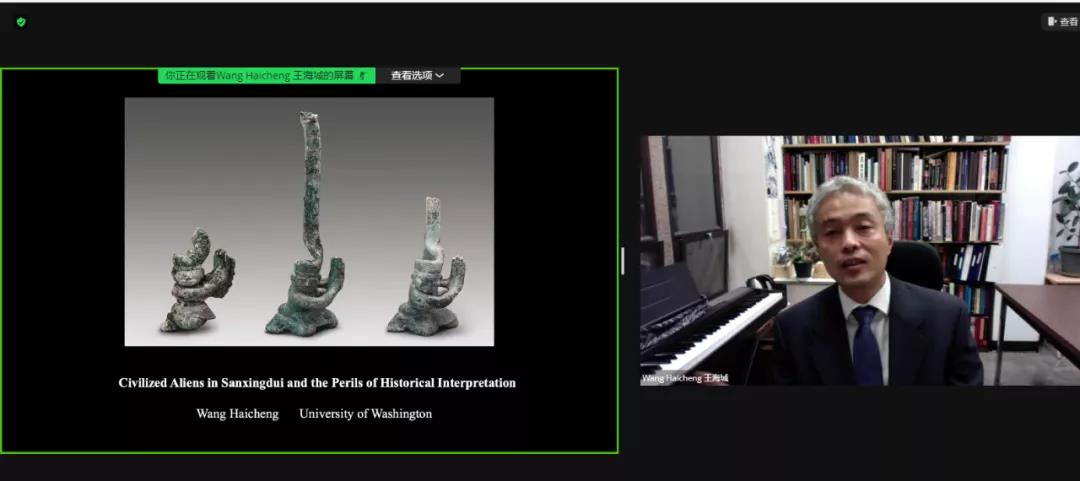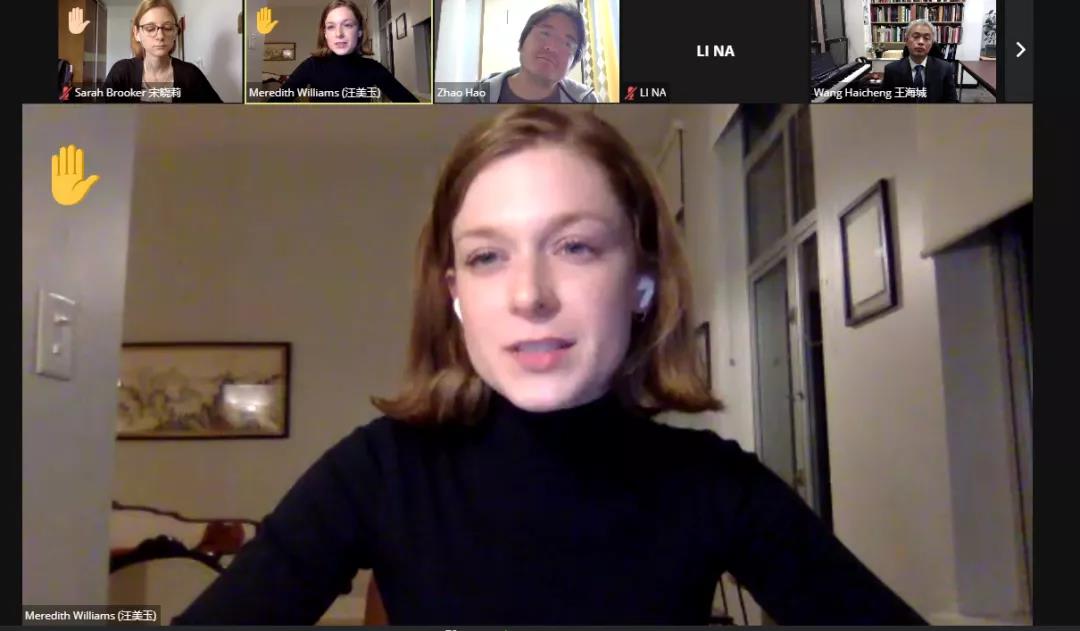On the morning of October 28, Associate Professor Wang Haicheng from the School of Art, Art History, and Design, University of Washington, Seattle, gave a lecture titled “Civilized Aliens in Sanxingdui and the Perils of Historical Interpretation,” sharing his insights into the Sanxingdui Civilization. It was the second lecture in the 2021–22 academic year’s Topics in China Studies Lecture Series, jointly chaired by Professor Lu Yang, Director of Studies of the Yenching Academy, and Professor Zhao Hao from the School of Archaeology and Museology, Peking University.
In an interview after the lecture, Prof. Wang described “visual evidence,” a term noted by renowned art historians Max Löhr and Robert Bagley, which has played a significant role in art research concerning bronzes and paintings. According to Wang, artworks, like musical notes, are the child of visual thinking rather than a language product. Also, he highlighted the value of “textual evidence,” stating that relevant documents were written for certain purposes, usually focusing on the context in which an artwork was created. For instance, we cannot know how an art piece was produced for the Qing Court without the properly preserved archives of the workshops under the Imperial Household Department. The professor saw it impractical to put the two types of evidence into simplified comparison because evidence must apply to the research object.
Prof. Wang underlined the distinctiveness of the Sanxingdui and Maya civilizations, adding that the similarities of the two indicate human universals, featuring several cultures, languages, and societal contexts of existing historical records. He called for the comparative study of the two societies concerning city development, origin myths, and sacrificial rites, among others. It is easier to work on excavation and reconstruction at an archaeological site like the Maya Ruins of stone architectural structures. Nonetheless, the archaeology of ancient China enjoyed no such advantage, the professor remarked. He suggested an in-depth comparison of the two civilizations to help reconstruct what had been lost in history.
Prof. Wang encouraged our Yenching Scholars to take a broader perspective and read literary works extensively because a world without literature is unimaginable, like one without music. He asked students to travel across the globe, gaining insights into different peoples and cultures, which would be of immeasurable help to their future studies.

On the Lecture
Breathtaking relics have been unearthed at Sanxingdui, including a bronze tree of life, a bronze standing human figurine, and a bronze mask, drawing wide attention from archaeologists fascinated by the artifacts’ cultural and historical significance. In his lecture, Professor Wang Haicheng led our Yenching Scholars into the world of archaeology and history.
Prof. Wang first reviewed how the Sanxingdui Civilization came to be known. The archaeological sites were discovered by chance when a local peasant dug out a cache of jade articles, resulting in several excavation projects spanning decades that have made Sanxingdui a world-known name. Archaeologists found traces of sabotage on many relics unearthed at Sanxingdui. Some were deliberately destroyed, and the silk burnt. The relics are like nothing unearthed before. For instance, archaeologists excavated a bronze human figurine with a gold mask and clad in a silk robe, and its enormous eyes recall the image of an alien.
The archaeological research on the Sanxingdui artifacts has been challenging due to a lack of written records, undetermined age, and damage of cultural sites in modern times. Nonetheless, when similar artifacts from different historical periods were unearthed in other places, archaeologists and historians conjectured the roles the relics may have played in their times, turning to the unearthed relics for clues and evidence.
Prof. Wang shared his thoughts on the origin of the Sanxingdui Civilization. For instance, some scholars hold that the Sanxingdui Civilization stood out among its counterparts in the Chengdu Plain when the people from Erlitou accepted the civilization. He noted that this hypothesis could be interpreted with the games theory and the butterfly effect. Still, he observed uncertainties and guesswork in the interpretation of the political role the Erlitou culture played in the rise of the Sanxingdui Civilization. Archaeological findings at the Shimao site, for instance, challenged the existing hypothesis.
At the end of his lecture, Prof. Wang advised our Yenching Scholars not to see the new archaeological findings as a one-for-all solution to academic issues that remain for discussion. Researchers must work on any possible connection between the latest findings and phenomena since clues and materials are not always available in such circumstances. It requires imagination-based conjecture. To this end, Prof. Wang encouraged our Scholars to read novels for a “wilder” imagination and a better understanding of civilizations.
